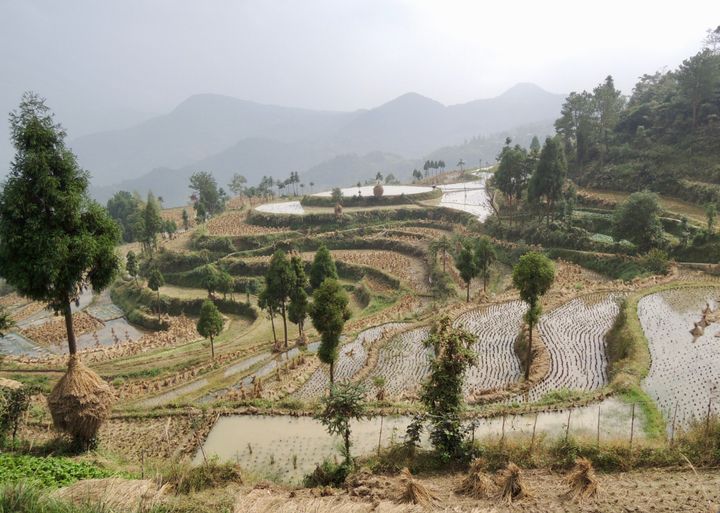
Terraced fields of Ming’ao.
If you are looking to get off the beaten track without giving up the comforts of top-tier hotels and universal cell phone service, it is tough to beat China. There are, after all, skyscraper-chocked cities of millions that most people in the west have never heard of. Wuhan? 19.7 million. Harbin? 12 million. Wenzhou? 9.5 million.
And when it comes to “undiscovered” countryside, it is fair to say that China has a virtually limitless supply.
Consider, for instance, the Ming’ao terraced fields. An 90-minute drive outside the coastal city of Wenzhou (about halfway up the coast on the East China Sea and Nanxi River), this region of mountains and valleys has, over the centuries, been sculpted into thousands of terraced fields.
Numerous roadside vantage points on the mountains provide a bird’s-eye panorama. With rice as the primary crop, the fields are often filled with water. And when the sun hits a hillside, the landscape can become a kaleidoscope covering several square miles.
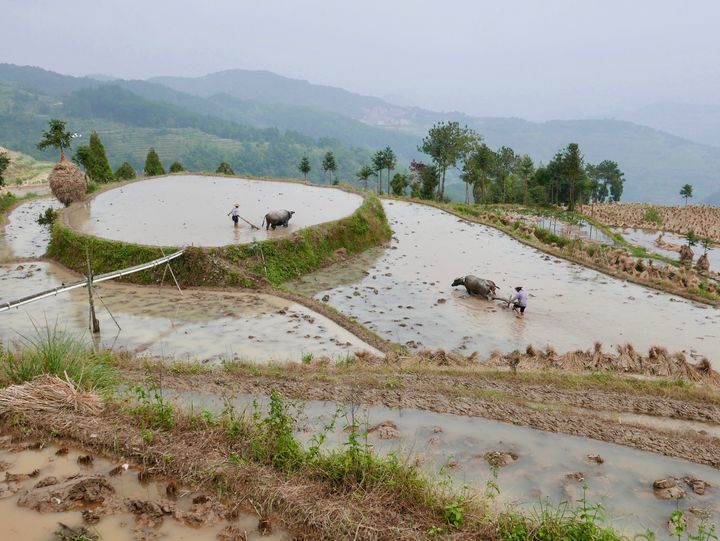
Working the fields with oxen.
It’s no wonder that this is area is popular with Chinese photographers (there are millions wielding pro-caliber Canons and Nikons). But Westerners are rare. So rare that they’re often treated like celebrities/oddities.
When I visited Ming’ao this past November, my popularity suddenly soared. Local people walked up to me or sat next to me and snapped selfies of us. Some put an arm around my shoulder. A big smile, a nod of thank you, and they were off. Sort of the way tourists treat the guy dressed as Mickey in Disney World.
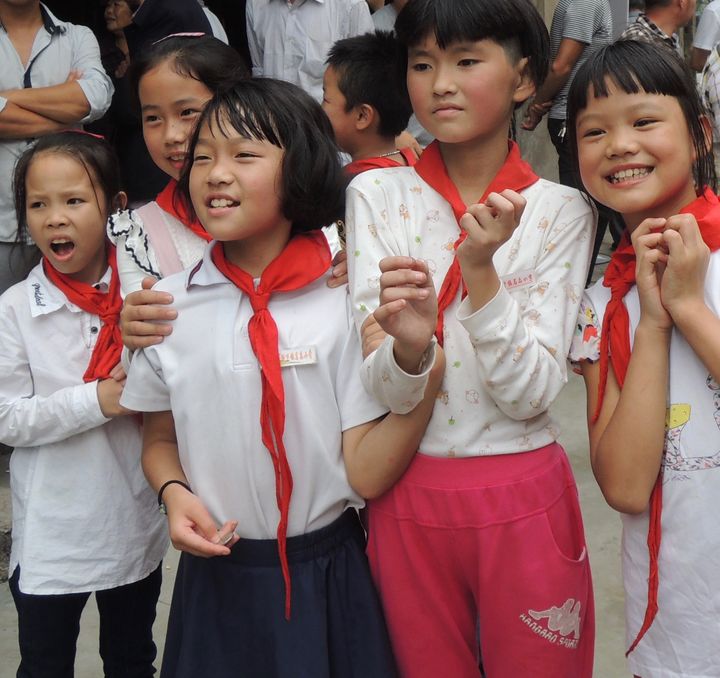
Schoolchildren on lunch break.
I was there with other American travel writers, and the locals pulled out all of the stops. Typically, in late autumn, with the rice crop harvested and the stalks piled like hay to feed the livestock in winter, the fields are dry. But to make sure we got the full effect, a huge expanse of fields was flooded, and local farmers dressed in traditional hats and coats came out with oxen to plow the paddies. Sure, a bit of show biz for our benefit, but the truth is that farmers still work these half-moon-shaped fields layered one upon the other, and Ming’ao is an amazingly beautiful place any time of the year.
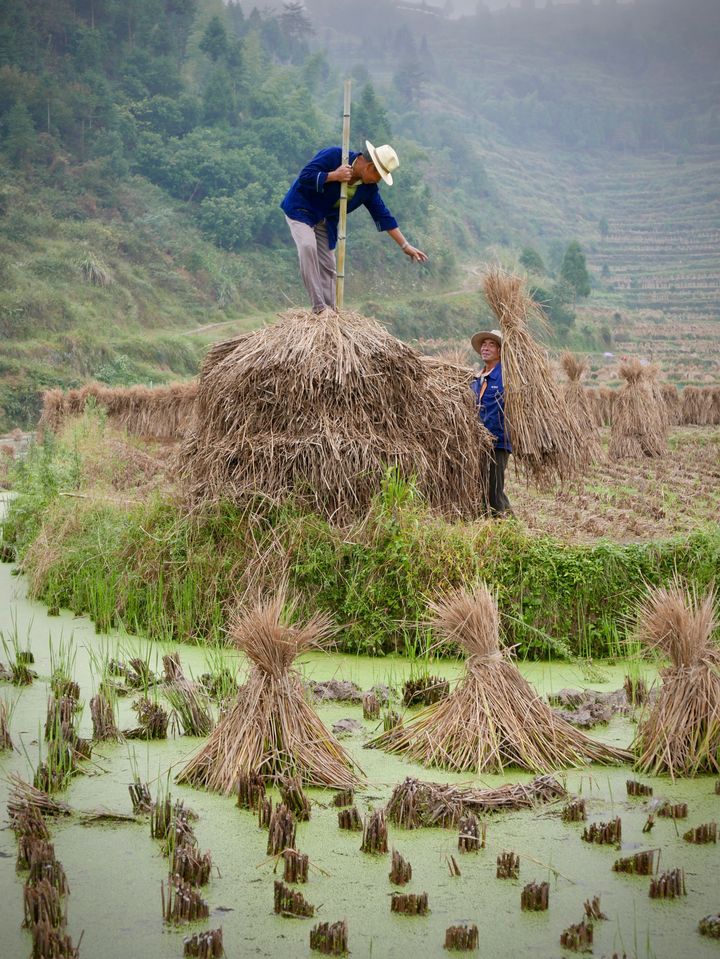
Gathering rice stalks for winter.
In winter, snow can cover just enough—and leave just enough uncoated—to give the impression of a gigantic circulatory system (which, in fact, it is). Spring and summer bring water-filled fields and every hue of green. Fall, dark greens and browns. Throughout the year, clouds waft over the valleys. But as you drive up a mountainside, the air clears and you are looking down on a misty, ethereal Shangri-La.
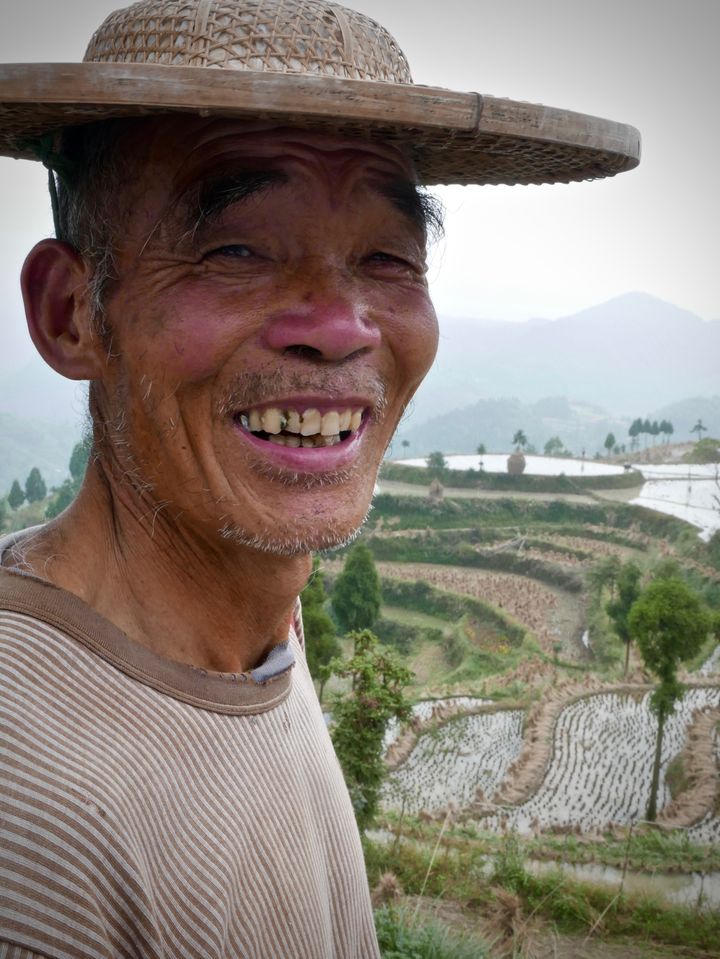
A farmer on his way to the fields.
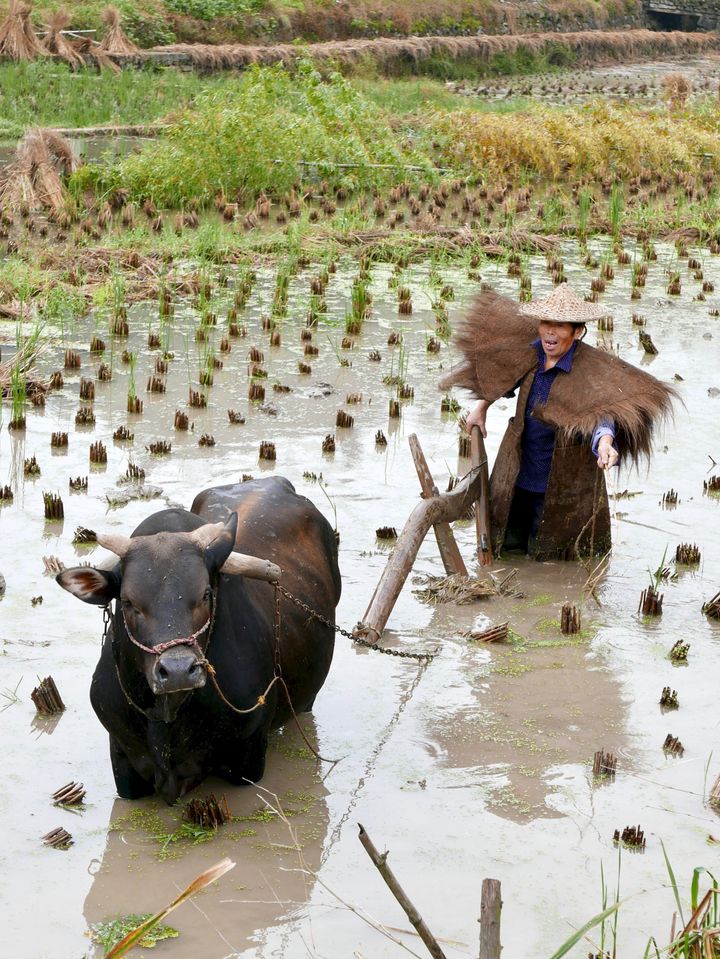
Plowing the traditional wood-plow way.
Numerous villages share the valleys and hillsides with the terraced fields, and while it seems everyone has a smartphone, so many of the traditional customs are unaffected by modernity.
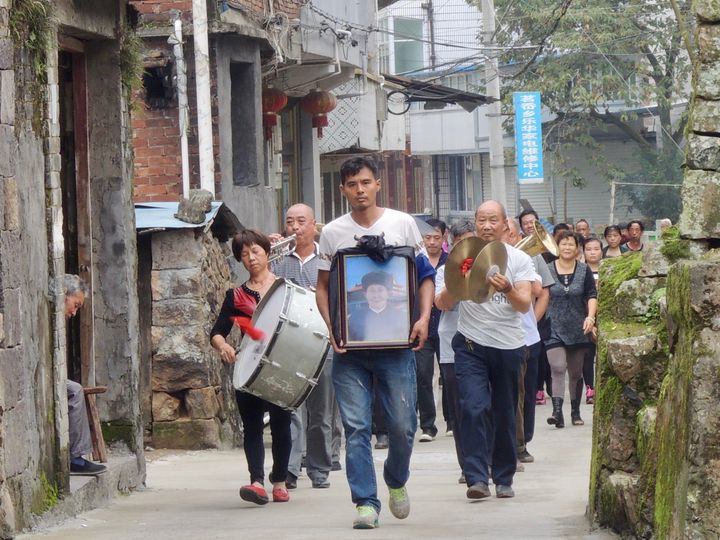
Villagers mourn with a march.
Old men sit outside around worn wooden boards concentrating on Chinese chess. Young children, with red scarves around their necks, play outside their school during lunch. A funeral procession, the lead mourner holding a photo of the deceased, followed by a small brass band, marches by. Women with rusty, wood-burning cookers sell wheat cakes and lamp cakes, two local delicacies.

Cooking wheat cakes on the street.
The wheat cake resembles a thick pita, and can be filled with meat, shrimp or pickles. Lamp cake is a crispy, fried, golden-colored blend of rice, soy, flour, radish and scallion.
The cakes looked so good that several of us broke one of the cardinal rules of travel: Don’t eat street food.
I took two bites, and immediately heard my body shout, “No! Stop!”
Others weren’t so lucky, and spent the next couple of days on a diet of rest and white rice.
Fortunately, this adventure into a beautiful, little-known part of China was just 90 minutes away from a city whose hotels rival some of the best in the world for comfort and cuisine. A great way to go off the beaten track.
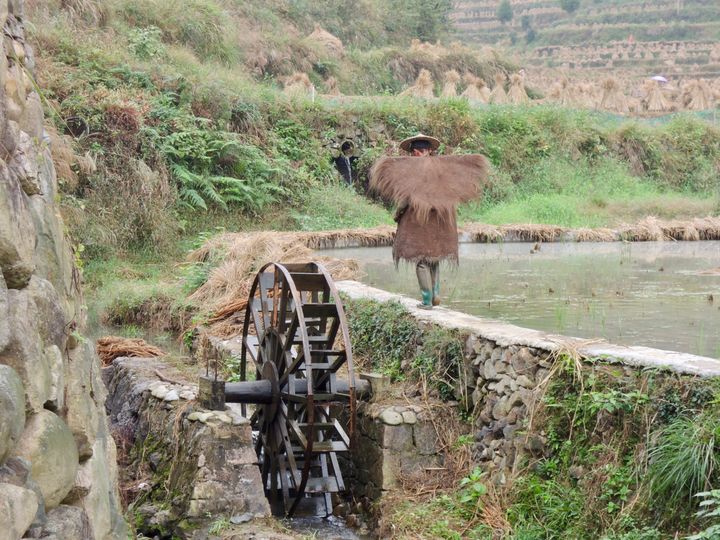
Heading home after working the fields.

Back at the hotel in Wenzhou, just 90 minutes away.
